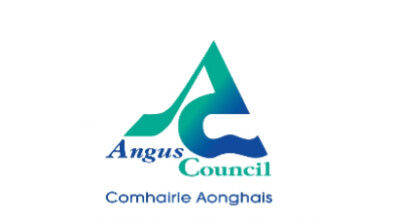Angus Council set to shed 800 jobs over three years
 Angus Council has announced plans to cut its workforce by up to 800 staff over the next three years.
Angus Council has announced plans to cut its workforce by up to 800 staff over the next three years.
The local authority, which currently employs 5,042 people, equating to 4113 full-time equivalent (FTE) posts, had already reduced the number of FTE posts by more than 500 in the last six years.
Speaking ahead of a meeting of the council on Thursday, council leader Councillor Bob Myles warned that “the Angus Council of 2022 will be significantly different from today”.
Administrative and clerical roles will be most at risk due to “increased automation, digitisation of processes and self-service”. The adult care workforce will also be further reduced.
A 2018 - 2021 workforce plan, which will be presented to councillors on Thursday, reveals that the council’s early years workforce needed to expand to support “early intervention and broader support for families”.
The plan states: “In order to continue to deliver quality services we need to focus on different forms of delivery whilst meeting financial contraction.
“This could reduce our council workforce by an additional 800 FTE over this period.
“Evidence to date suggests this pattern is likely for the foreseeable future.
“The make-up of our workforce will change over the coming years and the overall outcome will be a smaller, more sustainable workforce.”
Councillor Myles said: “Angus is an ambitious council and we are completely focused on achieving the best outcomes possible for the people and communities of Angus.
“Our new council plan sets out our agenda for the next five years. It mirrors the partnership ambition of the Angus wide local outcome improvement plan, focussing on three key priority areas – economy, people and place.
“Our approach is shifting more to locality based planning and delivery. It is vital that communities are involved in the planning and in some cases the delivery of services in the future, especially where that might mean doing things in a different way or not doing them at all.
“The council cannot do everything. We will always work to meet the needs of vulnerable citizens, but we can’t continue to deliver the current range and volume of services. We have to prioritise services on the areas of greatest need.
“Like every other council we need to find creative and effective ways of addressing our priorities with ever tighter financial constraints.”
“The council’s latest medium term financial projections indicate an anticipated funding shortfall of around £40m over the next three years.”
Councillor Myles also said he would be making strong representations the Scottish Government’s finance minister about the level and flexibility of local government funding when they meet next week.
He added: “We know that the public sector needs to change and we are absolutely up for that in Angus. But we can’t make the change needed if our funding is so squeezed that we have no room for manoeuvre. Angus isn’t alone in this – all councils are struggling to balance national and local priorities, something has to give.”
Referencing the council’s next phase of its change programme, he said: “On Thursday we will be reviewing the change projects identified for completion over the next two years. Many of them, such as the proposed customer contact centre and digital initiatives, will bring significant improvement for customers. Others, such as parking charges and music instruction, are more challenging.
“What is clear is that Angus Council will be a significantly different organisation by 2022. We have our sights set on being a better, stronger, more sustainable and smaller council by then.
“As our workforce plan highlights, the size and make-up of our workforce will change over this period, as new opportunities arise and digital processes replace some administrative roles. We have committed to reducing the number of management posts and you will see considerable change in the way we lead and operate our services. We expect to have more partnership and closer working with neighbouring councils and other partners. If things can be delivered cheaper and at scale we will join with other agencies to do so.
“Over the last six years, the council workforce has reduced by over 500 FTE. With the expected changes to working practice, this could reduce by a further 800 FTE over the coming three years. At the same time, due to government policy, which we welcome, the early years’ workforce will expand to support early intervention and broader support for families.”









